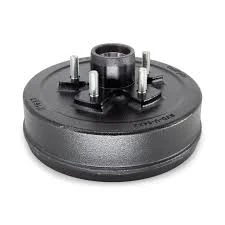
-
 Afrikaans
Afrikaans -
 Albanian
Albanian -
 Amharic
Amharic -
 Arabic
Arabic -
 Armenian
Armenian -
 Azerbaijani
Azerbaijani -
 Basque
Basque -
 Belarusian
Belarusian -
 Bengali
Bengali -
 Bosnian
Bosnian -
 Bulgarian
Bulgarian -
 Catalan
Catalan -
 Cebuano
Cebuano -
 Corsican
Corsican -
 Croatian
Croatian -
 Czech
Czech -
 Danish
Danish -
 Dutch
Dutch -
 English
English -
 Esperanto
Esperanto -
 Estonian
Estonian -
 Finnish
Finnish -
 French
French -
 Frisian
Frisian -
 Galician
Galician -
 Georgian
Georgian -
 German
German -
 Greek
Greek -
 Gujarati
Gujarati -
 Haitian Creole
Haitian Creole -
 hausa
hausa -
 hawaiian
hawaiian -
 Hebrew
Hebrew -
 Hindi
Hindi -
 Miao
Miao -
 Hungarian
Hungarian -
 Icelandic
Icelandic -
 igbo
igbo -
 Indonesian
Indonesian -
 irish
irish -
 Italian
Italian -
 Japanese
Japanese -
 Javanese
Javanese -
 Kannada
Kannada -
 kazakh
kazakh -
 Khmer
Khmer -
 Rwandese
Rwandese -
 Korean
Korean -
 Kurdish
Kurdish -
 Kyrgyz
Kyrgyz -
 Lao
Lao -
 Latin
Latin -
 Latvian
Latvian -
 Lithuanian
Lithuanian -
 Luxembourgish
Luxembourgish -
 Macedonian
Macedonian -
 Malgashi
Malgashi -
 Malay
Malay -
 Malayalam
Malayalam -
 Maltese
Maltese -
 Maori
Maori -
 Marathi
Marathi -
 Mongolian
Mongolian -
 Myanmar
Myanmar -
 Nepali
Nepali -
 Norwegian
Norwegian -
 Norwegian
Norwegian -
 Occitan
Occitan -
 Pashto
Pashto -
 Persian
Persian -
 Polish
Polish -
 Portuguese
Portuguese -
 Punjabi
Punjabi -
 Romanian
Romanian -
 Russian
Russian -
 Samoan
Samoan -
 Scottish Gaelic
Scottish Gaelic -
 Serbian
Serbian -
 Sesotho
Sesotho -
 Shona
Shona -
 Sindhi
Sindhi -
 Sinhala
Sinhala -
 Slovak
Slovak -
 Slovenian
Slovenian -
 Somali
Somali -
 Spanish
Spanish -
 Sundanese
Sundanese -
 Swahili
Swahili -
 Swedish
Swedish -
 Tagalog
Tagalog -
 Tajik
Tajik -
 Tamil
Tamil -
 Tatar
Tatar -
 Telugu
Telugu -
 Thai
Thai -
 Turkish
Turkish -
 Turkmen
Turkmen -
 Ukrainian
Ukrainian -
 Urdu
Urdu -
 Uighur
Uighur -
 Uzbek
Uzbek -
 Vietnamese
Vietnamese -
 Welsh
Welsh -
 Bantu
Bantu -
 Yiddish
Yiddish -
 Yoruba
Yoruba -
 Zulu
Zulu
Understanding the Mechanism of Centrifuge Brake Drum Functionality and Applications
The Centrifuge Brake Drum A Crucial Component in Mechanical Systems
The centrifuge brake drum serves an integral role in various mechanical systems, particularly in industries where machinery demands precise control over rotational motion. This component is essential for the safe and effective operation of centrifuges, which are devices used to separate substances of different densities through rapid spinning. Understanding the function and importance of the brake drum can enhance efficiency and safety in these applications.
At its core, the brake drum is designed to slow down or halt the rotation of a centrifuge when necessary. In many industrial settings, such as chemical processing or food production, the centrifuge must reach high speeds to achieve the desired separation of materials. However, once the process is complete, it is equally important to decelerate the machine safely and reliably. This is where the brake drum comes into play.
The operation of a centrifuge typically involves a rotor spinning at high velocities. The forces generated during this process can be significant, which necessitates a robust braking system to counteract the momentum. The centrifuge brake drum is strategically mounted to work in conjunction with brake pads or shoes, which are pressed against the drum to create friction. This friction brings the rotor to a stop, allowing for safer handling when the centrifuge is in operation.
centrifuge brake drum

In addition to its functional role, the brake drum also contributes to the overall design and efficiency of the centrifuge system. A well-engineered brake drum can minimize wear and tear on the components involved, extending the life of the equipment and reducing maintenance costs. High-quality materials, such as heat-resistant alloys, are often used to manufacture these drums, ensuring they can withstand the intense conditions of high-speed rotation and rapid deceleration.
Furthermore, advancements in technology have led to the development of electronic braking systems that integrate sensors and automated controls. These systems can provide real-time feedback to operators, enhancing safety and precision. By analyzing data on centrifugal forces, speed, and temperature, the electronic systems can engage the brake drum more effectively, ensuring that the centrifuge stops at the optimal moment.
In conclusion, the centrifuge brake drum is a vital component that ensures the safe and efficient operation of centrifuges across various industries. By understanding its mechanics and importance, operators can maintain better control over their processes, reduce hazards, and enhance the longevity of their machines. As technology continues to evolve, the brake drum will remain a key player in the functionality of centrifuge systems, underscoring the significance of its design and operation in modern mechanical engineering.
-
Rear Drum Brakes Maintenance TipsNewsAug.04,2025
-
Key Components Affecting Brake Drum FunctionNewsAug.04,2025
-
Important Inspection for Truck Drum BrakeNewsAug.04,2025
-
How to Prepare for Changing Rear Drum BrakesNewsAug.04,2025
-
Essential Tools for Cleaning Drum Brakes ProperlyNewsAug.04,2025
-
Brake Drum Function GuideNewsAug.04,2025
-
Safety Features of Red Brake DrumsNewsAug.01,2025
